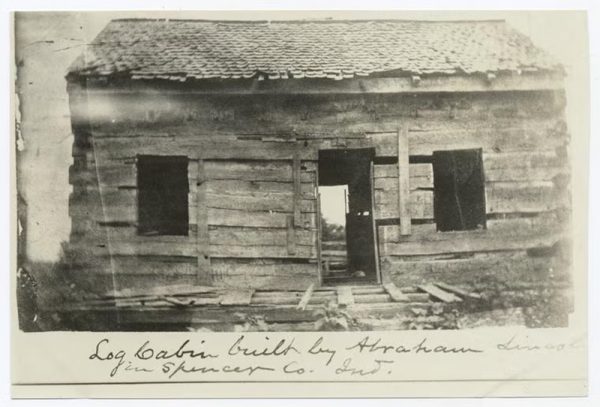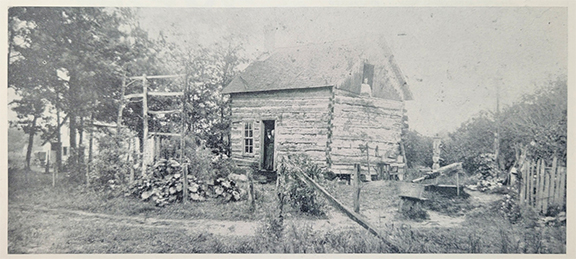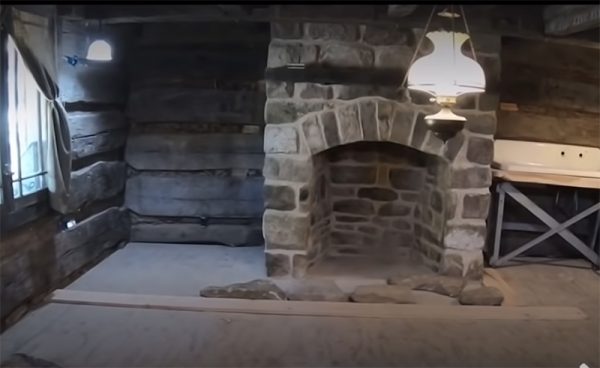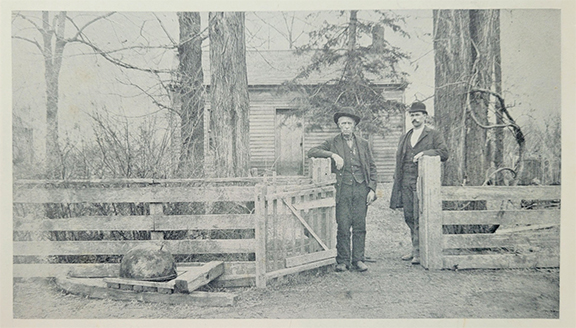This is the fifteenth in a Series of Reminiscences by E. R. Brown. Brown was born in Pulaski County on August 9, 1845. His writings are abstracted from the Pulaski County Democrat on microfilm housed in the Pulaski County Public Library, Winamac, Indiana. Find links to earlier entries at the end of this article.
Published in Pulaski County Democrat, May 25, 1922

I take it for granted that even schoolchildren know that the first houses of all our early settlers were log cabins. It would be interesting, if it was possible, to know when the first frame house was built in the county. My guess would be that it was in Winamac, but not until after all those who were then here had lived awhile in log cabins. From what I know personally, I would say it was still some years after that before such a house was built on any farm, and later still before any farmer built one for his first home.
A fact about these early homes that may well cause surprise is that no sand was found, or believed to exist here that was sharp enough, when mixed with the lime available, to make good mortar. For that reason no early cabins had plastered ceilings and few of the earliest had ceilings of any kind. Worse still, the cracks between the logs were, for the same reason, generally more or less open. Filled with mortar made of yellow sand, often without any kind of lime, much less cement, the filling in the cracks soon washed out. Many cabins were also very small, particularly considering the number of people living in them, those of rude construction predominating.

While the furniture and contrivances, even of the best ones, if described conservatively, would, at the least, seem in strong contrast with present day conditions, and farm life lacks much yet of having come to its own. The cabin in which President Lincoln was born and those in which his family lived, in Indiana and Illinois, the pictures of which are so often seen, may I think fairly be considered as illustrating those in which most of us older native residents were born.
It would be a great mistake, however, to conclude that there was no comfort, not to say happiness, in those early homes. There was much of both. It was my lot to spend one winter in a cabin while a soldier in the Civil War. We built it ourselves, after the crudest model known to our pioneers. Hand split clapboard roof, no ceiling, no floor, wooden door hinges and latch, pegs to hang things on, rough benches to sit one, roughly constructed open fireplace and with ten or twelve people in a twelve by fifteen room. Yet there was a lot of solid comfort in that hut, with such good cheer and merriment. I have reasons for knowing that the same was true of similar cabins–not omitting the overcrowded condition–nearer home seventy years or so later. “Hope springs eternal in the human breast,” while faith in better things ahead modifies suffering and deprivation.

The saving features of these early dwellings were the roof and the ample fireplace, with its handy and unfailing wood supply. In good weather God’s great outdoors is His richest provision for His creatures. But in bad weather a shelter, however primitive, and a bright roaring fire, are heaven sent blessings.
The worst thing about our pioneer homes was the sore lack of reading and music. I have recently read a description by a master pen of the shocking scarcity of any food for his hungry mind and better self in the early life of the martyred president just referred to. It is enough to break one’s heart. And yet that is typical, if not literally true of our early homes here. I have seen the sod houses, dugouts, shacks and cabins of our more recent frontiers. The otherwise repulsiveness of the two former was relieved by the cheaper glass and Portland cement which can be hauled long distances. The average shack built of dear lumber hauled a hundred miles, is far and away inferior to our former average cabins. Quite recently I saw a cabin in a remote part of Montana. Though surrounded by a fine quarter section of wheat in shock, its walls were built of old discarded railroad ties, the width being only the length of the tie and the length being barely a bit more. Yet in all these humble homes, papers, magazines and books, not infrequently musical instruments now find a place. Not long ago I saw a good piano in a log house in the deep woods of Minnesota, fifty miles away from a railroad.

The comfort and cheer of the wide open fireplaces were transferred into the more sightly and roomy frame houses which first replaced our cabins. Those flaming, roaring fires we used to sit in front of, and the glowing beds of live coals we used to gaze into, where we managed to see so many fantastic forms and figures, have remained with us in memory though so much else has vanished away or grown dim. I like to read the very beautiful and touching word-pictures of one of these old, long gone fire places and of the better type of family life associated with them, which Mr. Whittier has left as a rich legacy to the world in “Snow Bound”. I close with some of its lines:
What mattered how the night behaved?
What mattered how the north wind raved?
Blow high, blow low, not all the snow
Could quench our health-fire’s ruddy glow.
Links to Earlier Articles
- Part one (Common Inconveniences) October 2018 newsletter.
- Part two (Land) June 2019 newsletter.
- Part three (Trees & Timber) November 2019 newsletter.
- Part four (The River) February 2020 newsletter.
Later editions are carried as separate posts.
- Part five (Public Roads)
- Part six (Schools)
- Part seven (Markets & Trading Points)
- Part eight (It’s Mills)
- Part nine (Wild Game)
- Part ten (Feathered Wild Game)
- Part eleven (Animal Pests & Birds of Prey)
- Part twelve (Fishing in the Early Days)
- Part thirteen (Wild Fruit)
- Part fourteen (Early Commerce on the Tippecanoe)